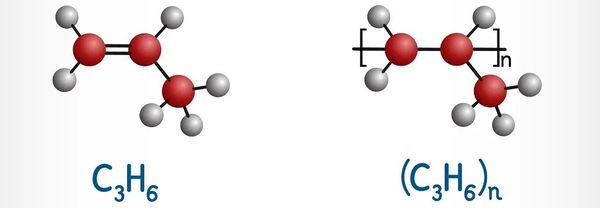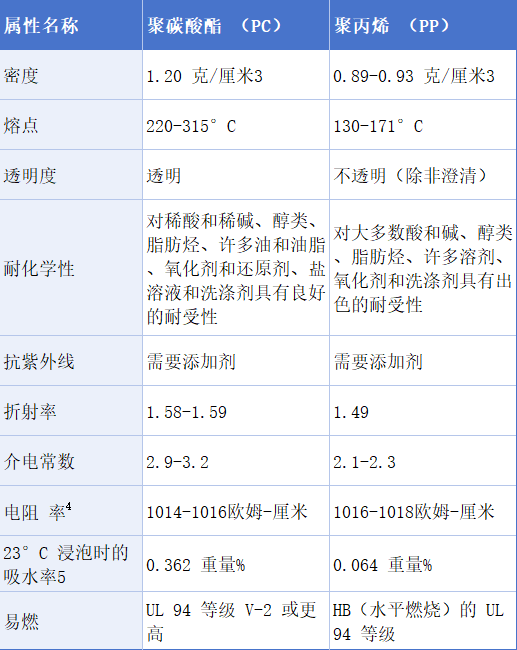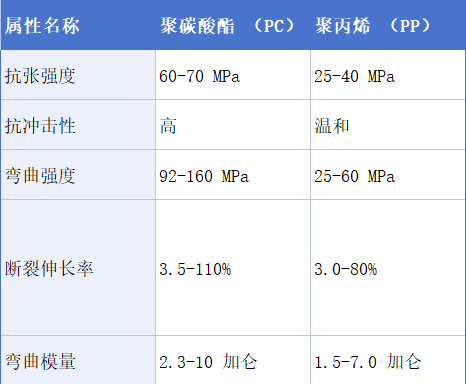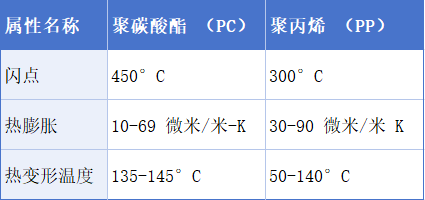A general-purpose plastic and an engineering plastic, comparing the key performance differences between PC and PP.
Polycarbonate (PC) and polypropylene (PP), two star products in the world of thermoplastic plastics, often make it difficult to choose. While each of them has unique characteristics, it is crucial to understand their differences.
-
PC is known for its toughness and transparency.
-
PP is known for its lightweight and cost-effectiveness.
This article will analyze the essential differences between these two materials from five perspectives: physical properties, mechanical properties, thermal properties, sustainability, and processing technology, helping you make an informed choice when selecting materials.
Polycarbonate

Chemical structure of polycarbonate (PC)
Polycarbonate is known for its high impact resistance, optical clarity, and thermal stability. It is typically divided into general-purpose polycarbonate, optical-grade polycarbonate, and flame-retardant polycarbonate. It helps maintain color and strength even under stress conditions. It is suitable for manufacturing baby bottles, mobile phone cases, cups, soybean milk machines, electronic product housings, automotive lamp covers, and automotive parts, among others.
Polypropylene

Chemical structures of acrylic (left) and polypropylene (PP) (right)
Polypropylene is a lightweight thermoplastic that possesses excellent chemical resistance and fatigue resistance. It can be divided into homopolymer polypropylene, block copolymer polypropylene, and random copolymer polypropylene. It is suitable for manufacturing household goods, bottle caps, water pipes, automation equipment, as well as containers for food packaging and cosmetic packaging.
Performance Comparison
Physical properties

Comparison of physical properties between PC and PP
Mechanical properties
Tensile Strength: The tensile strength of polycarbonate is significantly higher than that of polypropylene, allowing it to better resist stretching and tensile forces. This property is crucial for applications that require high structural integrity, such as automotive components and safety equipment.
Impact Resistance: Polycarbonate is renowned for its exceptional impact resistance, exhibiting strong damage and shatter resistance. It is suitable for materials that may be subjected to sudden impacts or drops, such as sports equipment and protective gear.
Bending Strength: Polycarbonate typically has a higher bending strength than polypropylene, providing greater resistance to bending and flexural forces. This property is crucial for applications where materials are required to withstand bending loads, such as structural components and automotive parts.
Fatigue resistance: Polypropylene has excellent fatigue resistance and can withstand repeated stress cycles without significant degradation or failure. It is suitable for cyclic stress applications such as automotive parts and packaging materials.
Hardness: Polycarbonate is generally harder than polypropylene. This makes PC more resistant to scratches and wear. This property is particularly useful in applications where the material may come into contact with abrasive surfaces, such as automotive parts and consumer electronics.
Stiffness: Polycarbonate typically has higher stiffness than polypropylene and is less likely to deform under load. It is suitable for precision engineering components and optical lenses.

Comparison of Mechanical Properties of PC and PP
Thermal performance
Heat Deflection Temperature (HDT): The HDT of polycarbonate is typically higher than that of polypropylene, demonstrating stronger resistance to heat deformation.
Thermal conductivity: The thermal conductivity of polycarbonate is generally lower than that of polypropylene, making it a better insulator.
Coefficient of Thermal Expansion (CTE): The CTE of polycarbonate is generally lower than that of polypropylene, resulting in smaller dimensional changes with temperature variations.

Comparison of thermal properties between PC and PP
Sustainability
Polycarbonate (PC) is recyclable, but the recycling process is relatively complex. This process requires high energy consumption, and the separation of contaminants can reduce the quality of the recycled material, making it uncommon. The recycled variants are mostly used in construction materials or certain automotive parts.
In contrast, the recycling of polypropylene (PP) is easier. Due to its lower melting point, the recycling process is simplified. Recycled polypropylene is widely used in storage containers, automotive parts, and packaging materials.

Processing Technology
Polycarbonate
-
Injection molding: Typically used for producing complex shapes, such as lenses, electronic enclosures, and medical devices.
-
Extrusion: Creating sheets and films for construction, signage, and glass.
-
Blow molding: suitable for manufacturing hollow items, such as bottles and containers.
-
Thermoforming: Used for producing large lightweight components, such as vehicle panels and protective equipment.


Polypropylene
-
Injection molding: Very suitable for manufacturing bottle caps, containers, automotive parts, and household items.
-
Extrusion: Producing fibers, films, pipes, and sheets for various applications.
-
Blow molding: commonly used for bottles, cans, and other hollow objects in the packaging industry.
-
Rotational molding: used for manufacturing large hollow items, such as water tanks and boxes.


【Copyright and Disclaimer】The above information is collected and organized by PlastMatch. The copyright belongs to the original author. This article is reprinted for the purpose of providing more information, and it does not imply that PlastMatch endorses the views expressed in the article or guarantees its accuracy. If there are any errors in the source attribution or if your legitimate rights have been infringed, please contact us, and we will promptly correct or remove the content. If other media, websites, or individuals use the aforementioned content, they must clearly indicate the original source and origin of the work and assume legal responsibility on their own.
Most Popular
-

List Released! Mexico Announces 50% Tariff On 1,371 China Product Categories
-

Nissan Cuts Production of New Leaf EV in Half Due to Battery Shortage
-

New Breakthrough in Domestic Adiponitrile! Observing the Rise of China's Nylon Industry Chain from Tianchen Qixiang's Production
-

Dow, Wanhua, Huntsman Intensively Raise Prices! Who Controls the Global MDI Prices?
-

Mexico officially imposes tariffs on 1,400 chinese products, with rates up to 50%






